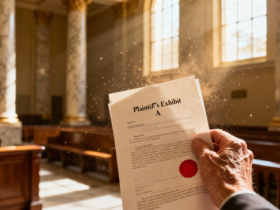For couples starting the path to permanent residence in 2025, the process can feel both hopeful and complex. This guide breaks down how the agencies, steps, and wait times fit together so you can plan with confidence and avoid preventable setbacks. You’ll see how interviews, consular processing, and documentation requirements interact with today’s policies and practical realities. Along the way, we highlight common trouble spots that can slow your case and share professional strategies to keep things moving. Whether you manage everything yourself or work with Nanthaveth and Associates, understanding the Marriage Green Card Timeline early makes the journey smoother and less stressful.
Understanding Consular Processing and USCIS Steps
The road to a marriage-based green card typically begins when the U.S. citizen or permanent resident spouse files a petition to establish the relationship. From there, the path splits into two categories: adjustment of status inside the United States and consular processing for applicants abroad. Both paths include familiar checkpoints—petition approval, background checks, financial sponsorship, a medical exam, and an interview—but the order and venue differ. In 2025, digital workflows and case tracking are more central than ever, yet processing still depends on each office’s caseload and your file’s completeness. Knowing which route you’re on clarifies your expected stops and helps you map a more predictable Marriage Green Card Timeline.
Key sequences and touchpoints in 2025
If you’re adjusting status in the U.S., the spouse typically files Form I-130 to prove the relationship and may file Form I-485 at the same time if eligible. USCIS then issues receipt notices, schedules biometrics, and can request more evidence if anything is missing or unclear. After background checks and the medical exam, most couples attend an interview at a local USCIS office, where officers verify details and assess the authenticity of the marriage. For consular processing, the National Visa Center coordinates fees and civil documents after petition approval, and the DS-260 immigrant visa application and I-864 Affidavit of Support form the core of your filing. The U.S. embassy or consulate conducts the visa interview and, if approved, issues the immigrant visa so you can enter the country and become a permanent resident upon admission. Across both tracks, staying responsive and organized at each touchpoint is what keeps your Marriage Green Card Timeline from slipping.
Required Documentation for Marriage-Based Filings
Strong documentation sits at the heart of a successful marriage case, and in 2025 the standards remain rigorous but clear. You’ll need to prove identity, marital status, and the authenticity of your relationship with consistent, well-labeled evidence. Vital records include certified copies of marriage certificates, birth certificates, and proof of any prior divorces; financial documents for sponsorship are also essential. To show a bona fide marriage, couples typically include proof of shared residence, joint finances, insurance policies, photos, and communications spanning the relationship. If you’re filing through consular processing, expect to upload civil documents to the CEAC portal and bring originals to the interview.
Building a persuasive evidence packet
Think of your evidence as a narrative that confirms the relationship is real and ongoing, not just a stack of papers. A curated packet might include joint bank statements covering several months, a lease or mortgage in both names, joint utility bills, travel itineraries, and affidavits from friends or family who know both spouses. Aim for clarity over volume: too many redundant documents can obscure key facts and invite confusion or a request for evidence (RFE). Organize your materials with a cover letter and clear labeling so the officer can quickly match evidence to specific claims about your life together. Because thorough documentation helps prevent RFEs and interview follow-ups, it directly supports a faster Marriage Green Card Timeline by removing reasons for the government to pause your case and ask for more.
What Couples Should Expect During Interviews
Interviews—whether at a USCIS field office or a U.S. consulate—confirm eligibility and test the credibility of the relationship. Officers typically review petitions, forms, and evidence while asking both spouses about their history and daily life. Questions often touch on how you met, significant dates, living arrangements, finances, and future plans together. The tone is professional, not adversarial, but honesty and consistency are critical, especially if your evidence is thin or the relationship timeline is complex. Expect the officer to cross-reference your answers with forms, prior statements, and documentary proof that supports your Marriage Green Card Timeline.
Preparation tactics that calm nerves
Preparation is the best antidote to anxiety, and it starts with reviewing your file so every answer matches what you’ve already submitted. Bring neatly organized originals and copies, be ready to explain any gaps or discrepancies, and keep your responses concise and factual. Some couples face a more detailed “Stokes” or separated interview if the officer needs to clarify inconsistencies; the key is to remain calm and stick to the truth. Professional guidance can help here: attorneys often conduct mock interviews, refine evidence presentation, and flag sensitive topics before you ever sit down with an officer. Many couples report that working with Nanthaveth and Associates before the interview gives them a clear plan for presenting their relationship, anticipating hard questions, and leaving a strong, credible impression.
Common Delays That Affect Green Card Timelines
While many cases proceed without major issues, certain delays are predictable and worth anticipating. Background checks can take longer for applicants who have lived in multiple countries or who share common names, and additional security screening can extend timelines. RFEs remain a common reason for slowdowns, especially when documents are incomplete, inconsistent, or poorly organized. Medical exams that are outdated or missing can also derail progress, as can rescheduling interviews or missing communications sent through mail or online portals. Seasonal workload swings, staffing changes, and field-office backlogs further influence your Marriage Green Card Timeline in 2025.
How to respond and minimize damage
The fastest way to recover from an RFE is to respond fully, clearly, and before the deadline, ideally with a short, organized cover letter and indexed exhibits. Keep your contact information current by filing the AR-11 change-of-address promptly, and check your USCIS or CEAC account for updates and messages. If a delay creates acute hardship—such as urgent medical needs, safety issues, or critical employment obligations—you may consider an expedite request with credible evidence. Proactively renew time-sensitive items like the medical exam if an interview is delayed long enough to risk expiration. Thoughtful case management won’t eliminate every delay, but it significantly reduces the chance that small oversights will snowball into months added to your Marriage Green Card Timeline.
How Legal Guidance Improves Approval Success
A seasoned immigration attorney doesn’t just complete forms; they design a case strategy tailored to your history and goals. From prior visa overstays to complex travel records or public charge considerations, the right guidance can preempt issues that lead to RFEs, denials, or lengthy administrative processing. Counsel can also evaluate whether adjustment of status or consular processing fits your circumstances best, including the realities of local processing times in 2025. When evidence is marginal or life circumstances are complicated, a strategic approach to documentation and narrative framing is crucial. Many couples rely on Nanthaveth and Associates to map the Marriage Green Card Timeline, assess risks, and sequence filings so that each agency touchpoint goes smoothly.
Practical ways attorneys add value
Good representation is practical as much as it is legal. Attorneys curate evidence to highlight the strongest proof of a real marriage, align all answers across forms to avoid contradictions, and prepare you for interviews with realistic practice sessions. They also monitor policy updates, form revisions, and fee changes that can affect eligibility or timing, reducing the chance of a misstep that resets your clock. If something goes sideways, counsel knows when to escalate, how to respond persuasively to RFEs, and when an expedite or congressional inquiry might make sense. The result is fewer avoidable delays, fewer surprises, and a more confident presentation at every step.
Importance of Accurate Forms for Smooth Processing
Even the best evidence can’t compensate for forms that are outdated, incomplete, or inconsistent. In 2025, USCIS and the Department of State continue to update forms and instructions, and using the wrong version can trigger rejections that send your case back to the starting line. Details matter: names must match across passports, birth certificates, and applications; dates and addresses should be consistent; and every required signature must appear where needed. Fee payments, filing addresses, and supporting documents also vary by category, and small mistakes can lead to rejection or an RFE that slows everything down. Careful form preparation preserves momentum in your Marriage Green Card Timeline, and many couples retain Nanthaveth and Associates to review for accuracy before filing.
Quality control checklist for 2025 filings
Before submission, confirm you’re using current editions of key forms such as Form I-130, I-485, I-864, I-765, I-131, and the DS-260 for consular processing, along with the most recent instructions. Check that all names, dates, and biographic details match across forms and evidence, and that every yes/no answer aligns with your history and prior filings. Include certified translations for any non-English documents, attach required photos in the correct format, and ensure all pages are complete—even if a question doesn’t apply. Consider adding Form G-1145 for e-Notifications when filing with USCIS and maintain copies of everything you send. A final, line-by-line review—ideally with professional oversight—can catch inconsistencies that cause delays, helping you submit a precise, credible package that keeps your case on track and, when needed, gives Nanthaveth and Associates exactly what they need to advocate effectively on your behalf.







